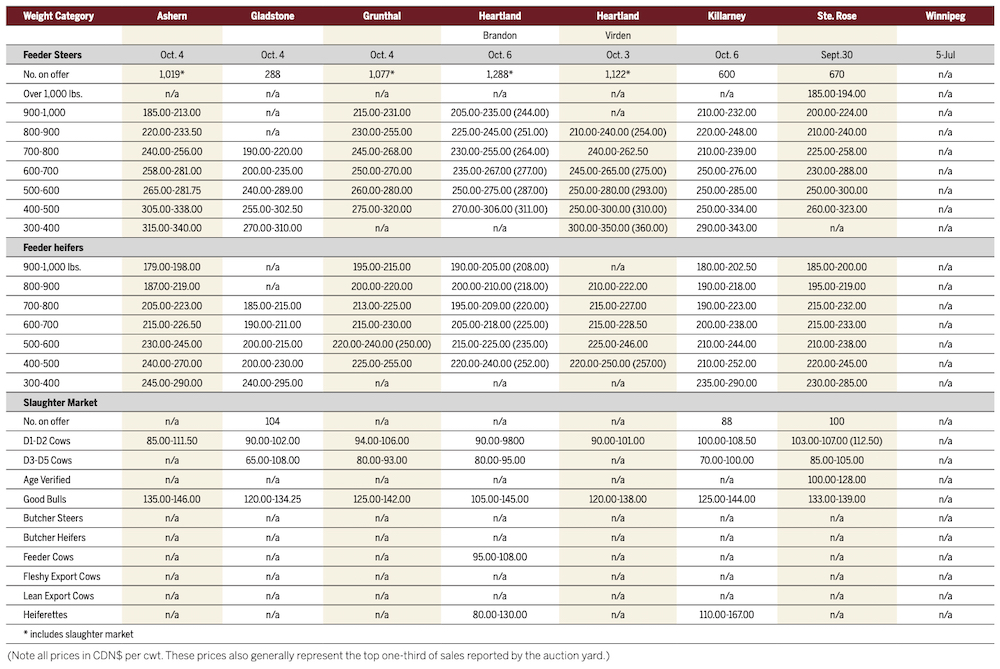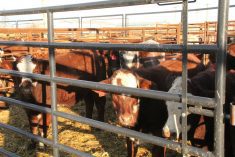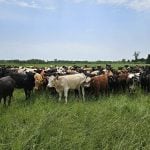Manitoba’s cattle auctions were busy during the first week of October as the seasonal fall run slowly picked up steam. The solid numbers led to pressure on some classes, while persistent trucking issues remain a concern. Overall, the market remained strong, with prices generally well above levels at the same time a year ago.
Lighter-weight steers under 500 pounds saw high-end bids top $300 per hundredweight around the province, although quality discounts saw many cattle in the same weight class trading well below that mark.
Heavier yearlings dipped slightly on the top end but were still solid overall with 800- to 900-weight steers fetching $210 to $250 around the province.
Read Also

Canadian canola prices hinge on rain forecast
Canola markets took a good hit during the week ending July 11, 2025, on the thought that the Canadian crop will yield well despite dry weather.
However, Brennin Jack of Heartland Livestock Services in Virden noted there was “a hole in the market in the 500- to 575-pound range.” He described those animals as too heavy to go to grass but too light to see much demand from elsewhere, making it hard to find buyers.
That was causing some frustration for producers, especially with many cattle in that sweet spot weight area.
If producers have enough hay around and the means to hold onto their cattle into the New Year, it will likely pay off for them, especially given the ongoing trucking issues, according to Jack.
“Trucking is a huge issue this year,” he said, noting there are far fewer trucks around than in the past. The nature of the livestock market means cattle can’t just sit around and wait for transportation.
“If guys don’t have trucks, they can’t participate in the market… They need to get wheels under them the next day to get where they need to go.”
While the trucking shortage limits market upside, many producers are still busy with the grain harvest and other fall work, which is spreading out the calves coming to market and helping underpin prices to some extent.
Jack said he expects auction yards to be busier by the end of October but noted increased numbers would also reflect in prices.
In the butcher market, D1 and D2 cows were generally in the $90 to $100/cwt. area around the province, with some premiums and discounts for quality outside that range.
“We’ve definitely sold fewer butcher cows than we have in previous years,” said Jack, noting many producers are still concentrating on fall field work.
The feed situation has improved considerably from the drought year of 2021, which may be leading to increased cow retention, especially after more cows were sold earlier in the year.
That said, many producers are pulling the pin on their cattle operations after years of drought and other issues, with Jack noting a record number of bred cows booked for upcoming sales.




















